How Can Designers Encourage Novice Users to Use a System
What's better than acquiring one new customer? It sounds like a trick question, but the answer isn't "acquiring two customers." It's actually retaining an existing customer. While there's a certain allure that comes with capturing new customers, keeping customers coming back will continually result in a greater ROI — and it costs 5-25X less. But how do you create a customer retention strategy that keeps your current customers engaged and happy? We've broken down some of the most applicable customer retention strategies that the biggest brands are currently using to inspire loyalty. From leveraging convenience to prioritizing personalization, we'll cover all the must-haves that any customer success or marketing team can test out today. You can't fix what you don't understand. Companies should be diligently tracking and analyzing the number of customers who churn, alongside the reasons that they may decide to churn. To help you with that, we created a Customer Churn Analysis Template. Use this template to store and analyze qualitative and quantitative feedback to better understand and reduce your churn rate – and increase retention. Download the Template It's hard to improve your business if you don't know how your customers feel about it. To start retaining customers, you need a process for obtaining customer feedback and sharing that information with the rest of your organization. This is where a customer feedback loop comes in. It provides a system for collecting, analyzing, and distributing customer reviews and surveys. There are a few ways to collect customer feedback. The most common way is with a survey like Net Promoter Score®, or you can ask customers to participate in user testing and focus groups. Using a few of these methods regularly should provide your team with ample and relevant customer feedback. Once you've gathered them, you should analyze your survey results by looking for trends in customer behavior and other areas to enhance user experience. Then, share this information with teams that will benefit from it most. For example, product reviews should be distributed to engineers and development teams so they can address flaws in your product's design. By using this system to collect and share customer reviews, your business can efficiently address criticism and improve the customer experience. Even if your customers aren't reaching out with feedback, your team should be proactive in communicating with them. If customers haven't interacted with your brand for a while, you should reach out and re-establish your relationship. Consider adopting a communication calendar to manage customer engagements and create opportunities to upsell and cross-sell. A communication calendar is a chart that keeps track of customer communication. It tells you the last time that a customer has reached out and alerts you when existing customers haven't interacted with your brand. This makes it easy to launch promotional offers and proactive customer service features that remove roadblocks before customers know they're there. For example, if a customer's subscription is set to expire, you can send out an email letting them know they need to renew their account. A company newsletter is a simple and cost-effective way of retaining customers. You can use email automation to send updates or offers to all of your customers at once. And, you can send the email using an RSS feed on a designated frequency, so you don't have to manually update the content or remember to click "send." Even though it's simple, newsletters can remind customers of your brand every time they open their inbox. A customer education program demonstrates a long-term investment in your customer base. Under this initiative, your business creates a variety of customer self-service tools like a knowledge base and a community forum. Then, customers use these features to locate solutions to service problems before reaching out to your support team. This program can extend beyond your products and services as well. For example, HubSpot Academy courses cover generic marketing, sales, and customer service topics. That way, HubSpot customers know how to use the HubSpot tools in their everyday workflow. We'll discuss HubSpot Academy later on, but this approach has become a proven strategy for optimizing customer success. Two things are true when it comes to building trust between your company and your customers: When deciding to make a purchase, 81% of customers say that trust is an important factor in their decision. Building trust isn't a one-size-fits-all tactic that any business can implement overnight. After all, the definition of trust is the "firm belief in the reliability, truth, ability, or strength of someone or something." Reliability is a key factor in building trust, so your company should be consistent in delivering value to customers. Consistently following through on your brand promise and doing what you say you'll do over time will have an impact on whether or not your customers perceive your brand as trustworthy. Offering a product or service that's superior to your competitors' in the eyes of your customers is no easy feat, but the reward is worth it in the long run. If you've developed a niche for your business that solves a critical customer pain point, you're on the right track to retaining customers. People ultimately buy what holds value to them. Eliminating a bottleneck, removing a kink in a workflow, or automating a process in a way that no other company can is a strong reason for a customer to commit to your brand. A customer retention program is an amalgamation of several types of tactics. There's a program for just about every business case. Below, we define customer retention programs, explain the most common types, and show you examples of how to implement them within your organization. A customer retention program is a specific initiative designed to encourage customer loyalty. Customer retention programs can be company-led, such as instituting a customer onboarding process, or customer-led, such as downloading and using a mobile app to make purchases. There are several types of customer retention programs you can start for your business. If you're not sure which is right for your company, here's a list of client retention programs you can implement to delight your existing customers. Onboarding is a customer success function that teaches new customers how to use your product or service. Rather than learning by themselves, customers are taught by a company representative who personalizes the training according to their needs. This way, customers not only save time but also understand how the product can help them achieve goals. Onboarding is an effective customer retention tool because it prevents churn with new customers. When users are first working with your product, they may get frustrated if they don't understand how to use it. Customers have deadlines and they can't afford to spend time learning how to master your product. Onboarding ensures customers know how to utilize your products or services so they can complete their goals on time. While it's important to focus on customers who are at risk of churn, you shouldn't forget about your loyal customers in the process. After all, what will these customers think if they see you putting all this effort in for users who don't love your brand yet? It doesn't seem too fair, does it? A customer loyalty program should reward customers for their continued commitment. The more they shop and interact with your business, the more they're rewarded. This keeps customers happy because they're getting more from the experience than just your product or service. And, since the top percentile of your customers spend much more than the rest of your customer base, you'll want to make sure these users are more than satisfied. As we mentioned above, your most loyal customers are also your most valuable ones. Not just because of the money they spend, but also for the information they provide. They tell you why they love your brand so much and make suggestions as to where you can improve it. Creating a panel of these customers can help you fine-tune products and services at your business. Additionally, you can increase customer advocacy by encouraging participants to publicly share their reviews. Customer testimonials are an effective method for building rapport when attracting and engaging potential leads. Your company is more than just a product or service. Customers look at everything your business buys, sells, and advertises to its target audience. If they sense any inconsistency between your brand's messaging and its actions, they'll be quick to recognize the ingenuity. Instead, it's important to get involved with your customers beyond product and services. Think about their values and create a Corporate Social Responsibility (CSR) program that pursues a moral goal. While your initiative doesn't have to be as ambitious, getting involved with your customers' communities and personal goals is a great way to demonstrate your commitment to their needs. Similar to the feedback loop, customer beta testing groups serve a dual purpose — they provide your business with specific, actionable observations from the customer's POV and they keep customers invested in the new feature your company is beta testing. Beta testers are usually an exclusive group since every customer isn't asked to give their feedback on a new feature due to bandwidth limitations. The exclusivity alone is usually enough to entice customers to commit to the process for a few weeks or months, but incentives like swag and gift cards can sweeten the deal. Ideally, different customer retention programs work hand-in-hand to create a customer experience that cultivates loyalty, positive sentiment and makes customers more willing to continue purchasing. By retaining customers, companies can help them derive more value from a product, encourage them to share feedback to influence potential new customers, and start to build a community of like-minded customers or users they can connect with. Below is a list of strategies you can start executing this week. If you're an SMB, your support team may only consist of a few people. However, as you grow your customer base, service demand might spike and force you to expand the bandwidth of your support team. Hiring is expensive which is why many businesses turn to technology to supplement their customer service needs. Santa Cruz Bicycles did exactly this when it realized its current approach to customer support wasn't sustainable. While the company was committed to providing excellent customer service, that standard became harder and harder to meet as more customers purchased their bikes. Rider Support Lead, Kyle Harder, notes this challenge in the graphic below. Instead of hiring more reps, Santa Cruz Bicycles turned to customer service tools. It started with a CRM, using the software to record customer interactions and create support tickets. Reps used the HubSpot task tool to mark open support cases and ensure each ticket was responded to in a timely manner. This kept the Santa Cruz support team organized while creating a more delightful customer experience. As the company grew, the support team needed a more refined tool for its daily workflow. So, the organization adopted Service Hub to centralize customer service operations. What this meant was that all support inquiries were funneled into a shared inbox where reps could collaborate on complex service tickets. This made it easier for the team to streamline urgent or sensitive issues, improving their likelihood of preventing churn. Try as you might to avoid them, mistakes happen in business. Whether that mistake is a data breach, an outage, a billing error, or something else, a mistake can put you at risk of losing your valued customers — depending on how you handle it. HubSpot Research found that, in cases of company error, 96% of survey respondents would continue buying from a company they regularly purchased from if they apologized and rectified the situation. So what that means is, you need to develop a plan for the inevitability of a mistake — and a plan for how to solve it promptly, apologize honestly, and move forward to retain your loyal customers. HubSpot had an experience with this during INBOUND 2018 when an outage we suffered impacted numerous enterprise customers. We worked quickly to fix the mistake, to learn how it happened and to prevent it from happening again — and then, our COO and VP of Customer Success apologized, explained what had happened, and detailed how we would prevent it from happening again publicly on our blog, and privately to customers via email. Sometimes a brand inspires loyalty not through tactics and systems, but through what it stands for. If you've ever watched Simon Sinek's TED talk "Start with Why," you probably already know a thing or two about the importance of having a mission, or "reason why." TOMS has built its entire business model around making the world a better place. The way it does this is in its "One for One" policy. For every pair of shoes that are purchased, it gives a pair to people in need, thus far donating over 60 million pairs of new shoes. Image Source As consumers, we're focused on the altruistic and environmental effects that our buying habits have beyond consumption. Doing good is becoming more and more important to us. This doesn't mean you should build your marketing around an altruistic message just to do it. The lesson is in finding something that people care about and positioning your brand around it. The coffee goliath Starbucks has always been innovative with its marketing, especially in the customer acquisition department. In the early days, Starbucks founders Zev Siegl, Jerry Baldwin, and Gordon Bowker focused on the sounds and the smells inside their shops in order to provide a delightful customer experience. But to grow, they had to get innovative. One of their most innovative customer retention moves is the Mobile Order & Pay feature within the app. Thanks to the feature, customers can order their coffee before they even arrive at the shop. Image Source The simplest takeaway here is this: Make your products and services as accessible as possible. Identify the desires and behaviors of your customers and create tools and systems that empower them. Whether that be an app or other traditional methods, it's up to you. This supermarket giant has a strong presence in the UK, with nearly 4,000 stores nationwide. For huge brands like these, coming across as authentic and human can be a challenge. Online grocery shopping and self-service scanners are convenient, but people still like dealing with other people. Customer service is still necessary, and the folks at Tesco have chosen to use Twitter as a way of executing this with a human touch. They show they care by adding personality to their interactions with customers. Check out this recent interaction: Image Source To get started with an approach like this, identify your audience personas and communicate with them on their preferred channels. It doesn't matter if it's email or Snapchat, as long as it's where their attention is. From here you should encourage customers to speak directly with you through that channel. Make it part of your messaging and remind them during and after the buying experience. And, always add personality to every message. Nobody likes a canned response, so make sure whatever you're communicating sounds like it's coming from a human. We've taken a look at several B2C examples, but what about the B2B world? R&G Technologies is an Australian IT support firm that has developed strong, long-term relationships with its clients. It solidifies these relationships with rapid response times and strict service-level agreements (SLAs). They get back to their clients quickly, and their employees have been bought in on this by tying these KPIs to how much they earn. However, the biggest lesson is in its customer satisfaction surveys. R&G Technologies clients have an opportunity to express what's doing well and what isn't. This allows the company to identify unhappy customers before they churn. Image Source R&G focuses heavily on asking the right questions in order to gain insights it can execute on. This information is used to make better business decisions and retain customers. Most importantly, these discussions identify the challenges of R&G's audience. This can help inform both the overall marketing as well as the retention strategy. Don't underestimate the power of one-on-one conversations with your clients (especially if you're running an online business). Touted as the most comfortable pair of underwear in the world, MeUndies drives great retention through two elements. The first, which we've already covered, is in its"reason why." The folks at MeUndies were tired of the struggle that comes with finding a great, comfortable pair of underwear. To back this up, they've fostered a strong culture and are very transparent with the production process. They have an entire page dedicated to their factory (it's beautiful by the way). Although this makes for great retention, our focus is on their clever referral program. Customers are encouraged from the moment they purchase to refer a friend, and the rewards are worth it: For every friend you refer, you get $20 and they get 20% off their first purchase. Image Source There's a gamification element that shows how far through the buying experience your friend is, too, including a "nudge" button. If a friend adds a product to the cart but hasn't completed checkout, you can use this to send an email reminder about it. In other words, MeUndies has found a way to use their current customers to reduce cart abandonment, while providing social proof in the process. When done well, referral systems can be really effective for retention. The key is to focus on strong incentives and gamification to get people invested. Most importantly, don't forget to empower and encourage your customers to become advocates for your brand in the process. Want your customers to see you as the obvious choice over your competitors? Make note of Apple's strategy, demonstrated by their "Mac vs. PC" ad campaign. The campaign starred John Hodgman as the inept PC and Justin Long as the cool, collected Mac. The two would quip humorously over what made the Mac a better choice than a PC in a really entertaining manner. The "Mac vs. PC" campaign was a very tongue-in-cheek — and it generated a lot of dispute. Not only that, but it divided the market and set Apple apart from their competitors by identifying the kind of consumers who should buy Apple products. Sticking true to who you are as a brand shows integrity and makes it easier to attract customers that just might become your strongest brand advocates. Can you find a cause to fight for (or against)? If your brand is more friendly than this, you can still put some fire behind your story and create a rally effect. Don't be afraid to be a little bold in your marketing to get the best results from this approach. It's unusual for a commodity-based organization to implement a subscription service into their business model. Which is exactly what Amazon created in the form of Prime. The subscription was originally created to bring customers faster delivery. It generated a lot of controversy, but quickly became popular with regular shoppers on the platform. How can you use subscriptions to achieve growth goals and increase customer retention? You don't need to charge a fee for your subscription model in order to gain customer loyalty. Providing benefits in the form of exclusive content and events is another way to leverage this approach without spending a ton. If you're going to take a page directly from Amazon's playbook, then make sure you're offering something people want. This goes back to customer development and understanding your audience's desires and challenges. Experiential marketing has long been used as a way for brands to create positive sentiments with their customers. Coca-Cola had a 70-day campaign around the 2012 Summer Olympics, and part of this was their "Coca-Cola Beat Generator" app. This experience brought together music, sports, and the Coca-Cola brand. Image Source They showcased it during their roadshow around the Olympics, using samples and sounds from the games themselves. Users could then take the MP3 recording with them and share it via social media. The results? 16,500 visits to the web version and 1.78 million Facebook impressions. Even though Coca-Cola produces beverages, they figured out a way to tap into the positive hype around an event by providing delightful customer experiences that reached beyond the point-of-sale. Look for ways to create positive feelings in the form of new experiences outside of your main products, services, and value propositions. Sometimes, the greatest form of advertising isn't your own. In fact, customers are more likely to trust opinions from family, friends, and other consumers more than branded content and ads. And that's where social proof comes in. Using the power of testimonials and customer stories, Codeacademy uses social proof to show prospective customers the value of its products — with stories straight from the horse's mouth about how it helped them: More than 97% of customers report that online reviews influence their buying decisions, and seeing that lots of other brands and individuals like you use a product actually makes you want to do it, too — FOMO is a powerful marketing and retention tactic. Use customer testimonials and information to attract new customers, and to convince existing ones to stick around or upgrade their products. Highlight loyal customers — and their stories — on your website or your social media networks and share their successes to help you grow your own. Just because your customer has made a purchase from you doesn't mean you should stop trying to close the deal. Your customers have more options available to them than ever before, and if they find a competitor of yours with a similar offering and price that seems more exciting, you could lose them. Education is one of the most valuable things you can offer your customers (or even just your site visitors). HubSpot Academy offers free marketing, sales, and customer service training videos and certifications that anyone can use to learn and grow their skills — and some are only available to HubSpot customers and partners. These unique, exclusive offerings help make the HubSpot community more engaged and interested in staying in the loop with our educational programs. People are passionate about how much they love their pets. (Just ask my cat Leela, who I recently purchased a condo for. It's only four feet tall, but still.) Pet supply ecommerce company Chewy knows its customers love their pets. It also knows they can buy pet food and supplies from a variety of companies — including Amazon — for similar prices. So it uses the principle of surprise reciprocity to delight its customers with spur-of-the-moment gifts and cards for their pets. These surprises don't need to be big or expensive, but they're memorable to their customers by demonstrating care for their fur-children. The example below is a painting Chewy had commissioned of a customer's pet — other ideas could be hand-written thank you letters or free samples of new products. Came back from vacation & found the best surprise waiting at our front door. Thanks, @Chewy! #CX #custserv #Quinn pic.twitter.com/chjmGxAlks Part of knowing and understanding your customers is knowing where they spend their days using your product, and how they most want to get customer support when needed. For the most part, Slack functions perfectly as a workplace communication tool. But like all technologies, it experiences the occasional outage that impacts its users -- many of whom immediately start asking their coworkers around them and the Twittersphere if their Slack is down too (or, they make jokes that maybe they were fired and had their Slack deactivated). Luckily, Slack is there to help when things go wrong. They know their users are active on Twitter, and they keep updates frequent on Twitter in cases of outage or other customer issues. We're investigating the cause of connectivity issues affecting all users. Thanks for your patience. https://t.co/yQgFc3ppZv Spending time in your customers' shoes to get to know how they look for help and information when they do encounter issues will prevent them from feeling like they're in the dark -- and will make you dependable and reliable in their eyes, even when things go wrong. To the point above, taking the time to say thank you to your customers — outside of an email campaign or a customer purchase — goes a long way toward building a brand that's lovable and memorable. Clothing and shoe ecommerce site Zappos is well-known for its excellent customer service — including its efforts to show customers how much they care by saying thank you and sending gifts. In fact, Zappos even has an office-wide tally of how many gifts and surprises have been sent to customers during the previous month to make sure the whole team is doing their part to show customers how much they're appreciated. Saying thank you is a simple customer retention technique, but an effective one that distinguishes faceless websites from beloved brands. Image Source We've all been there before. Your free trial, one-year subscription, or introductory pricing is set to expire in a few days. You've set an alarm to cancel it before you're charged again. Companies like Adobe recognize this all-too-common churning technique and put steps in place to mitigate it before it happens. Adobe offers Creative Cloud Apps on a monthly subscription that locks customers into the service for one year at a time. If they choose to cancel early, they have an option to receive up to two months without payments in order to keep their Creative Cloud service. The company is purposefully attempting to retain customers with two months of a free subscription, and they're offering it at a time where customers are attempting to make a decision about their long-term relationship with the company. By stepping in at this stage, Adobe is giving customers a reason to stay a little longer so the brand can prove its value to them. Your business can take this technique one step further by giving extra care to these customers. Follow up with them on a phone call or with a personalized email to understand how you can make their experience better over the next two months. Classy Curlies builds trust extremely well by doing something most business owners might scratch their heads at — they show their customers how to accomplish the company's mission on their own. On the website, customers will find DIY kits and tutorials on how to care for their hair and skin with everyday products they can find at home or in the grocery store. And by the way, Classy Curlies also sells these DIY kits if customers want a more specialized regimen. By putting the customer first and offering these solutions free of cost, Classy Curlies has been able to build trust with customers and retain them. Whether they opt for the latest DIY kit or they're a faithful reader of the DIY blog, odds are a new customer will find something at Classy Curlies that'll keep them coming back for more. Image Source For people who want to manage their reproductive health, Flo offers a world-class platform that predicts, analyzes, and tracks individual health data. The app offers a calendar to easily view when their cycles begin and end and delivers daily health insights to make sense of all those predictions. All of these features and more are integral to managing individual health trends, but there are plenty of apps on the internet that do this. What sets Flo apart from its competitors and helps them retain customers is the community within the app. Flo provides prompts for the users to discuss, pairs each user with a virtual health assistant, and even holds space for anonymous chat rooms where users can discuss their health concerns privately. While none of the offers Flo provides to its users are meant to take the place of professional medical advice, the community within this app bridges the isolation gap that some people might feel while they wait for medical results, when they seek a medical professional, or when they want recommendations for the best products to use. A robust community like this isn't easy to find, so Flo is able to retain customers with this unique value-add. Repaying a friend for a round of appetizers. Collecting funds for a surprise gift to a coworker. Tipping your barber when you're short on cash. There are virtually endless uses for a finance app like Cash App that makes money sharing simple and quick. Their business model is simple — they make money off of a small fee that users pay when depositing money into their bank accounts. But how exactly do they retain these customers so that they'll send and receive money through Cash App next time? The secret to their customer retention strategy isn't really a secret at all. The magic lies in the lifestyle that is attached to the app. It takes at least two people to use Cash App — someone to send money and another to receive it. If you have at least one friend, acquaintance, or coworker who uses the app, you'll probably find yourself using it at some point to pay them back for grabbing your morning coffee. So long as the app is conveniently available on our phones and at least one other person we know uses it, we're likely to be a customer for much longer than we ever anticipated. If you're anything like me, you're obsessed with wallflowers from Bath & Body Works. They smell amazing, they're usually on sale, and they last much longer than traditional candles do. But I'm willing to bet that the scents, price, and longevity are secondary to the reason the company has kept you as a brand loyal customer for so long. Their retention strategy? The wallflower fragrance plug. Only Bath and Body Works wallflower fragrances will work in the corresponding plug-in and that's not on accident. AirWick, Glade, and other fragrance plug-ins are designed this way, too. If you decide to purchase one brand over the other, you're committing to the scents that come with it. Once you've made the one-time purchase for the plug-ins, it'll be a lot harder to switch brands and make that one-time investment again. So, you stay loyal to the brand and try out new scents and products as they're released. Image Source When Canva first stepped into the graphic design market, they were competing with some of the most established brands in the industry. They were the little fish in a big pond. Now, they've become a household name (at least in every tech and marketing household). This company has successfully acquired new customers and retained existing ones over the last few years by solving one problem: access to easy-to-use professional design tools for non-designers. Long gone are the days of watching an Adobe Illustrator tutorial to whip up a great-looking social media post. Canva offers ready-to-use templates, icons, elements, images, and fonts that just about anyone can pick up and create a masterpiece with. The company has listened to its customer feedback and developed even more features like animations and enterprise-level accounts so that non-designers can work faster and produce high-quality work. Canva recognizes that it can't replace Adobe Creative Suite, and it doesn't have to in order to retain its customers. It simply solves a major problem to the best of its ability. A common shopping place for teenagers to spend their allowances, Five Below is teaching those of us in the business world some valuable lessons about customer retention. The brick-and-mortar store sells inexpensive products which is a commonality among businesses with high customer retention rates. However, Five Below makes shopping for their inexpensive products an experience for every customer who visits a store. Every few weeks, Five Below switches up a large portion of their inventory. On average, estimates show that a customer visits a Five Below store every 99 days, so they're bound to see something new and exciting every time they shop. This novel, FOMO experience is a simple reason to keep people interested in visiting your store or website. Image Source Preventing customer churn starts with understanding why they churn. Every strategy won't work for every business. A loyalty program works well for established companies with a steady customer following while building trust is a strategy that can be started on the first day your business launches. As long as you're keeping the customer's needs in mind, they'll be happy to purchase from you every chance they get. To learn more about preventing customer churn, you'll want to run an analysis on your current operations. Discover what's driving your churn rate and how to reverse it with the Customer Church Analysis Template below. Editor's note: This post was originally published in September 2019 and has been updated for comprehensiveness. 
How to Retain Customers
1. Track and analyze churn metrics.
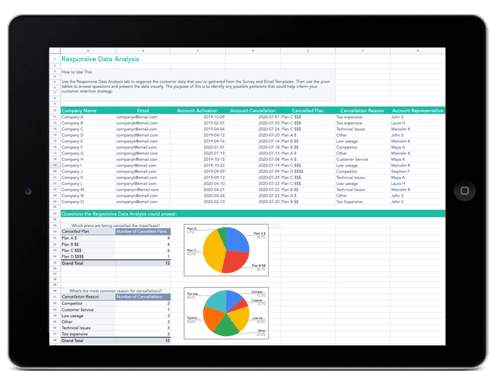
2. Implement a customer feedback loop.
3. Maintain a customer communication calendar.
4. Send a company newsletter.
5. Start a customer education program.
6. Build trust with your customers.
7. Offer unique services.
8. Start a customer retention program.
Customer Retention Program
Client Retention Program Ideas
1. Onboarding Program
2. Customer Loyalty Program
3. Customer Advisory Board
4. Corporate Social Responsibility Program
5. Beta Testing Group
22 Excellent Customer Retention Strategies that Work
1. Adopt customer service tools.
Santa Cruz Bicycles
.png?width=900&name=Service%20Hub%20industry%20_%20personas%20_%20messaging%20(2).png)
2.Apologize when you make mistakes.
HubSpot
3. Inspire with a mission.
TOMS
4. Empower customers with convenience.
Starbucks
5. Leverage personalization.
Tesco
6. Speak to your customers.
R&G Technologies
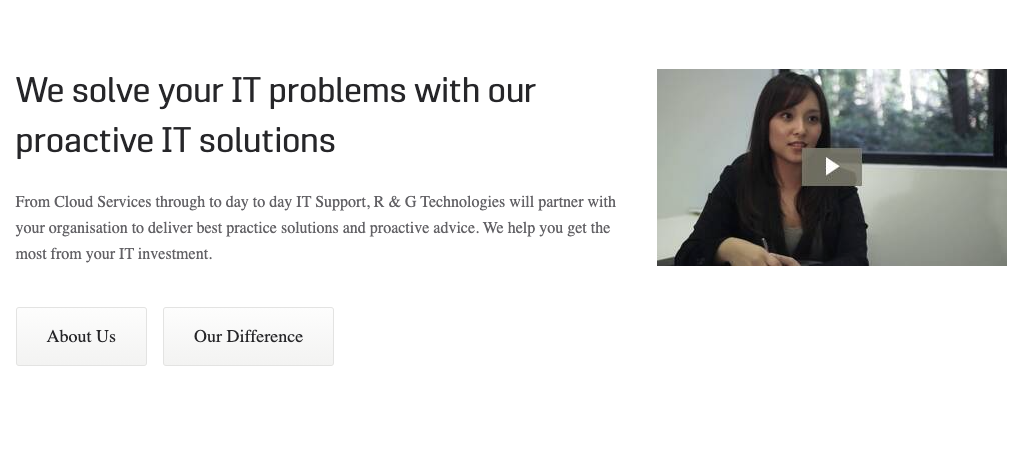
7. Use gamification and referral programs.
MeUndies
8. Create a divide between you and your competitors.
Apple
9. Use subscriptions to bolster the experience.
Amazon

10. Use experiences to elicit positive feelings.
Coca-Cola
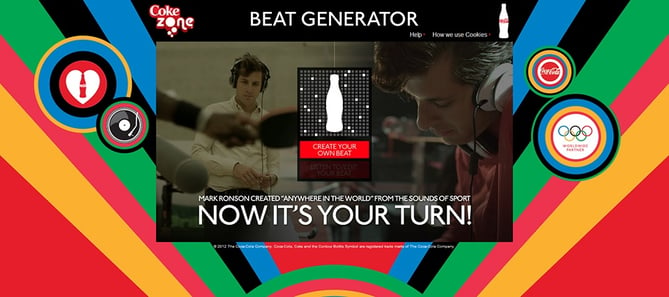
11. Capitalize on social proof.
Codeacademy
12. Educate your customers.
HubSpot Academy
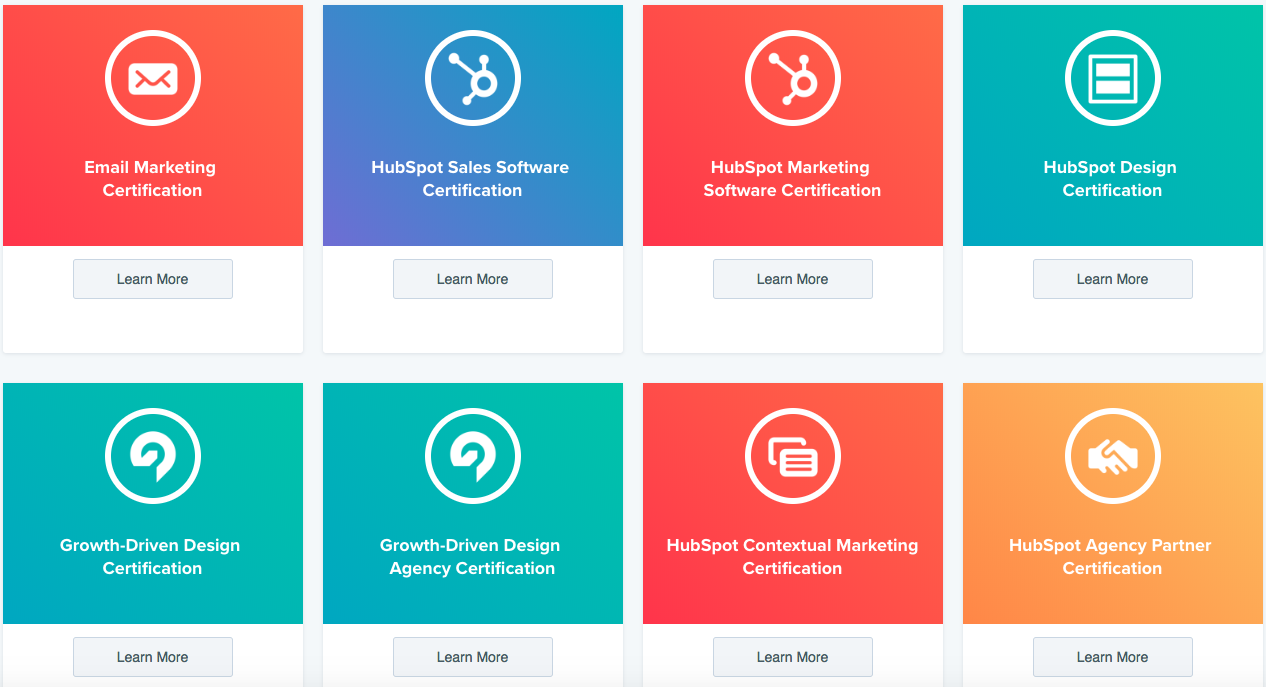
Image Source
13. Surprise and delight.
14. Offer support on the right platforms.
Slack
15. Thank your customers.
Zappos
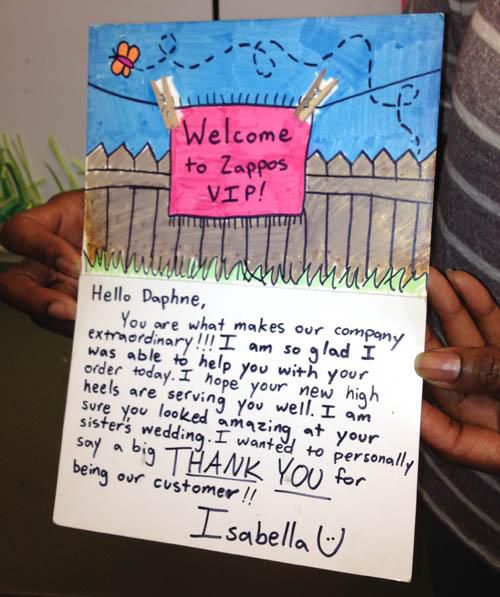
16. Provide incentives before a customer can terminate their membership.
Adobe
17. Build trust with your customers.
Classy Curlies
18. Form a community around your product or service.
Flo
19. Become part of the customer's lifestyle.
Cash App
20. Establish loyalty with a one-of-a-kind product.
Bath & Body Works
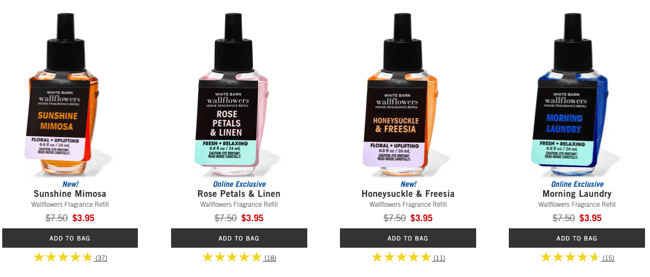
21. Offer a product or service that solves a problem, but not every problem.
Canva
22. Keep things interesting.
Five Below

Which customer retention strategy is right for your business?


Originally published May 3, 2021 5:00:00 PM, updated November 23 2021
How Can Designers Encourage Novice Users to Use a System
Source: https://blog.hubspot.com/service/customer-retention-strategies
0 Response to "How Can Designers Encourage Novice Users to Use a System"
Enregistrer un commentaire